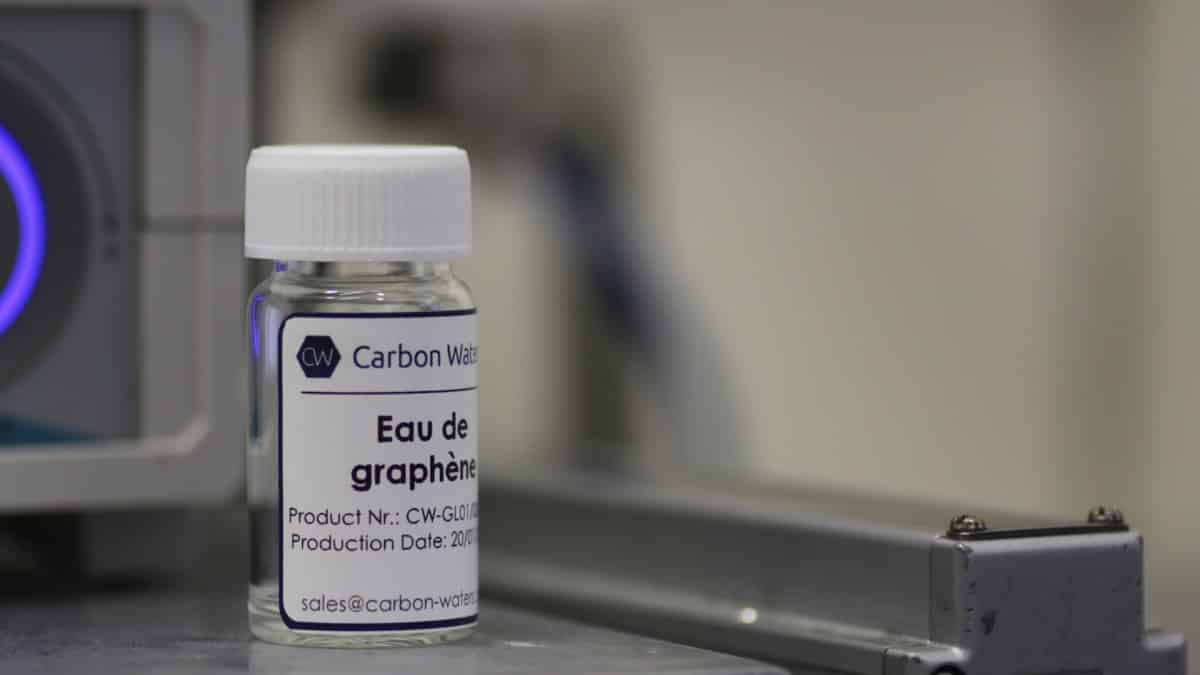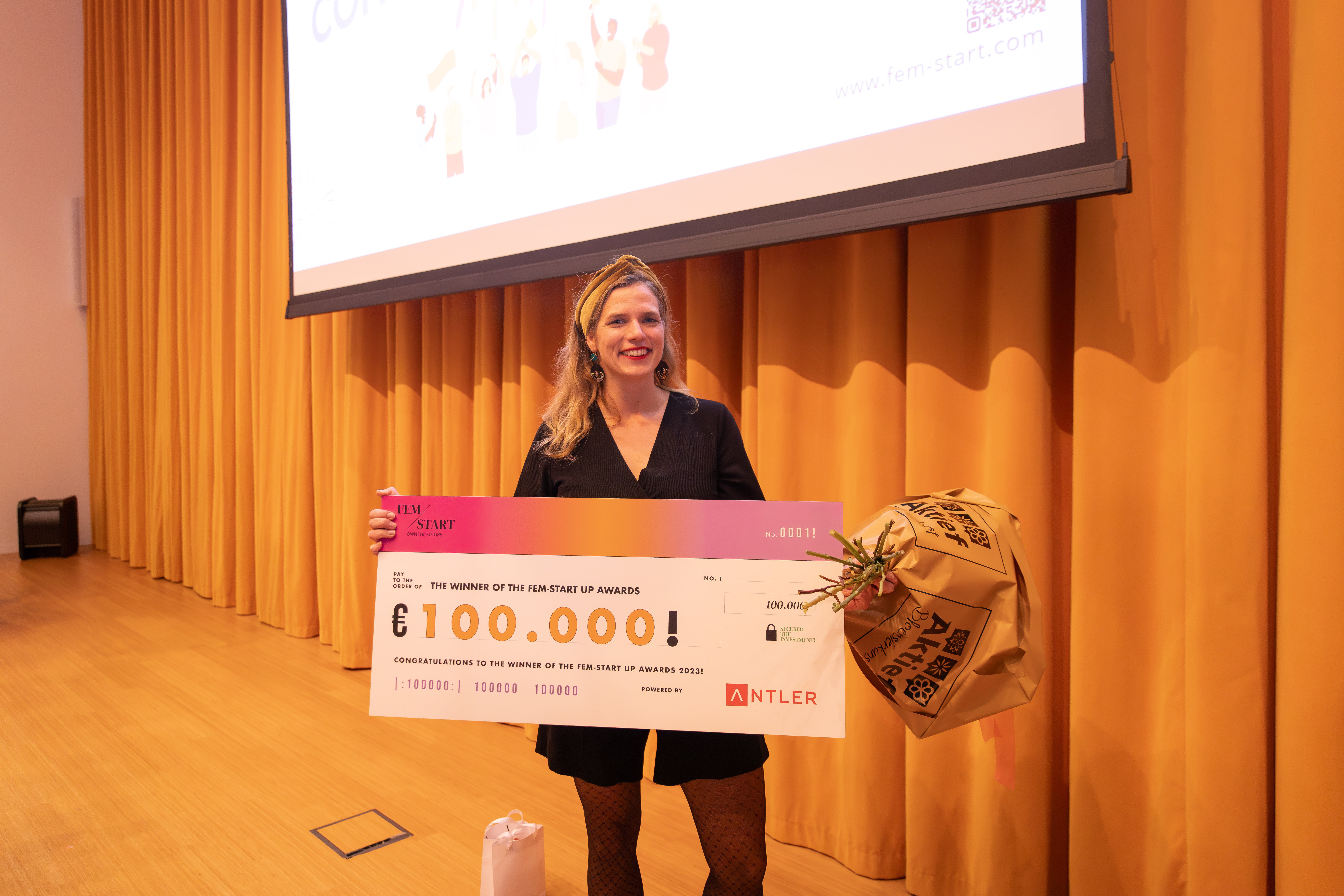
A French start-up has developed a high-quality liquid graphene that can be used in material resistance, thermal management and metal substitution. Unlike graphene oxide dispersion, Carbon Waters’ graphene is 100% pure and stable and it is safe to use in industrial and research settings. Plus it is environmentally friendly.
Graphene is an extremely thin carbon sheet which performs in a unique way in many areas. Layers of graphene are stacked together in order to form graphite, the most common form of carbon material. Graphene is the thinnest known compound and exhibits incredible properties.
Innovation Origins talked with Alban Chesneau, one of Carbon Waters founders.

What is Carbon Water?
Carbon Waters is a young chemical company specialized in graphene production but also in the development of additives and coating which use graphene. The thing that is very particular about the way we produce graphene, is that we don’t use powder at all. Basically, we produce graphene from graphite and everything is done in a liquid form. Subsequently, this means that there is no risk concerning nanoparticles or nano-powders. This is something that is really novel – not using any oxide dispersion in the production of graphene. Everything is done in water, in active solutions which also prevent risks associated with organic powders. We have achieved a very stable solution of graphene in liquid, something that is absolutely very hard to accomplish, a lot of companies are working on this.
What was the motivation behind the creation of Carbon Waters? Was there a problem that you wanted to solve?
So, I am not the inventor of the technology. I was working in a consulting company specializing in technology and innovation. I thought that the way they prepared the graphene was amazing, especially because it addressed sustainability. That’s why we then we began to discuss with several industrial companies what we should do with our graphene. We were able to resolve issues around surface protections and component extensions by developing coatings which extended the shelf life of the components. And this is how Carbon Waters came about. It was not at all the case that we started out with an idea for a new product, but rather that we already had a product and we sought the best way to use it in the most sustainable way.
Material science is very hard as you know. You end up with a new material and there are plenty of possibilities. When you start out, it is hard to tell which context you will use it in or where it will best work.
What makes Carbon Waters different than other similar start-ups?
One characteristic of Carbon Waters is the development of toxic-free products. Right now, a lot of coatings use contact residual materials and there are risks involved in using them. What we do, and what we really want to keep doing in Carbon Waters, is to use graphene so as to replace these materials. Develop a product that is problem-free and much more environmentally friendly. One thing that we have also achieved, is that we have demonstrated that our graphene is bio-degradable. So, we have a product that is toxic-free – not just for living beings but also for the environment.
There are numerous companies that focus on this area, but they are much more concerned with performance than with the environmental part. What we want to achieve is two things: have a major product which performs extremely well. As well as a product – that could even be used in medicine – which is also bio-degradable.
What has been the biggest obstacle that Carbon Waters has had to overcome? Was there a moment when you thought of giving up?
Yeah, as graphene can be used in many different products we need to expand very rapidly as well. Our main challenge is being able to increase the quantity of graphene that we produce as quickly as possible. And because the process is new, we first needed to properly understand all of the parameters. We have done that now and are currently building a bigger reactor. This means more money and also more chemical expertise: chemical engineers. This is the main challenge that we have at present.
Has there been a moment when you thought, ‘this isn’t possible’, and considered stopping?
No, it is possible. It is just a matter of time and money. Right now we are having meetings about bringing new investment on board into the company in order to expand productivity. We need to do that as soon as possible. We are already trying very hard. However, this is just a technicality, we know that we can do it.
What has been the most gratifying moment during the Carbon Waters process?
The most gratifying moment for us, is when we see that our graphene has discernible effects on products. We saw with several prototypes that we were achieving terrific positive results. That showed us that we are heading in the right direction and that we need to keep on moving forward.
What can we expect from the coming years?
Well, our goal is to have three validated prototypes for graphene coatings. But we also will be closer to have our second version of the reactor by the end of the year. We will also be preparing a fundraiser which will be held next year.
We want to further develop our graphene in the future. Graphene is made from carbon. Carbon can be derived from various sources, even from bio-degradation processes. One goal is to produce graphene from food waste. Creating carbon out of food waste, then using graphene in this way will, in essence, mean that we will have oil paintings and coatings made from food waste.
What is your ultimate goal? What is your vision for the future?
Our ultimate goal is to produce a product that is completely circular. One goal would be to produce graphene from food waste. We will have made oil paint from food waste!







